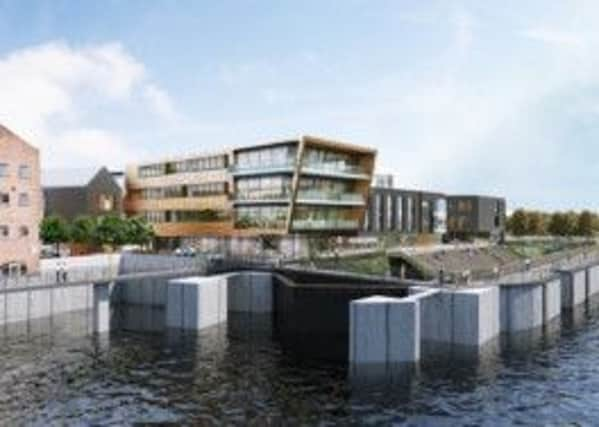‘Bog standard’ digital offices given go-ahead


The Centre for Digital Innovation will be based at a site in the emerging Fruit Market arts quarter on the west side of the River Hull, opposite the Deep.
Developers say it will act as a catalyst for the area’s future development, providing a home for start-up digital design firms as well as established businesses, next to a disused dry dock, which will become a public ampitheatre.
Advertisement
Hide AdAdvertisement
Hide AdThe main block is intended as “sister” to the eye-catching Deep, but several councillors raised concerns over its design.
Coun Tom McVie said the developers appeared not to have taken a “blind bit” of notice to the concerns which had been raised at a pre-application meeting. He said: “This is a bog standard building that could be plucked out from any modern development, anywhere in Europe. This doesn’t say Hull.”
Planning officers had recommended refusal on the grounds that the loss of the Regency-era stables in Queen’s Alley hadn’t been justified.
But councillors approved the plans after agreeing that conditions would be put on the permission so that details of the design would have to come back before the committee.
Advertisement
Hide AdAdvertisement
Hide AdJon Moss, co-founder of C4DI (Centre for Digital Innovation), which will be the digital hub in the complex, said it would create a tech cluster similar to Silicon Roundabout in London. He said: “I am absolutely delighted. We showed some of the designs at a meeting of Northern Tech Network and everybody’s jaws dropped and said it was something they would give their hind teeth to have.
“Leeds and Manchester are struggling to get this kind of thing off the ground.”
Managing director of developers Wykeland Group Dominic Gibbons said the decision should pave the way for an application for a grant from Europe.
He said: “Everyone involved in the C4DI project will be delighted at today’s decision. The project has been several years in the concept and planning stage, but this vote finally gives us the green light to proceed with our application for European funding.
Advertisement
Hide AdAdvertisement
Hide Ad“The European Regional Development Fund has already approved our application in principle but we needed detailed planning consent before a grant could be offered. This decision has cleared the way for us to make a detailed submission for final assessment to be made before the September 31 deadline. This is not just about a building. The C4DI project will bring together people and ideas from all parts of Hull’s digital community, helping to build the city’s reputation as a centre for digital innovation”.
The proposal will mean the demolition of all the buildings on the western part of the site, including the stables built in 1822 to stable dray horses working at the adjacent Robert Bean & Co brewery, sparking objections from English Heritage, and Hull Civic Society, who said the building should stay.
Grade 11 listed Central Dry Dock will be planted with reed beds at either end, and a wooden structure installed to create an “ampitheatre” with terraced seating, with new lockgates to replace the presently badly corroded 20th century gates.
Despite concerns over the stable building, which one member of the public told the committee should be restored as a Shire horse centre and agricultural and rural museum, Coun Alan Clark said he believed “taking the building down will enhance the area greatly.”
Advertisement
Hide AdAdvertisement
Hide AdCoun Stephen Baker said the prospect of jobs “sways it – it certainly does for me”. He said: “It’s employment in a high-unemployment area.”
Former chairman of planning Coun John Fareham who was away from Hull yesterday and unable to vote, said he would have moved refusal. He said: “I think it is a pretty poor design. If it is going to be a centre for digital excellence it needs to be a centre of architectural excellence, something which compliments the Deep. The last thing we need is a bland, anywhere UK, grotty little office building.”
Developers had argued that the stables were largely a result of late 19th and early 20th century rebuilds and although locally listed “of limited significance” and structurally unsound. However planners said the block was the only surviving example of such a building in the city.